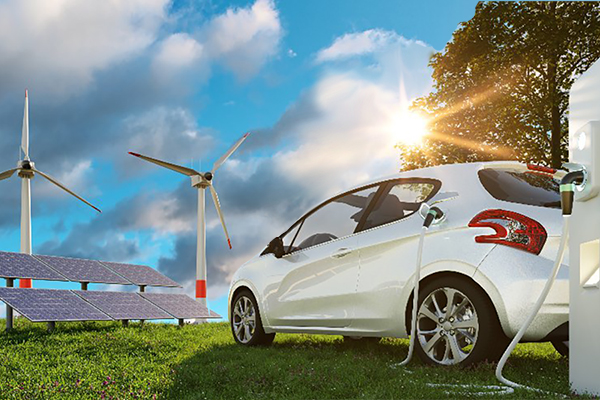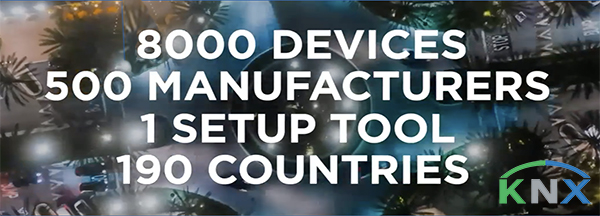
Harm Elzinga discusses the energy transition and its challenges, and makes the case for using KNX-based energy management systems reduce our carbon footprints.
Given the effects of climate change, the geopolitical situation, the need to reduce our carbon footprint and find more reliable forms of ‘clean’ energy, a complete energy transition has never been more important. In the unprecedented energy crisis we are currently facing, with high energy costs and capacity issues on our energy grid, energy management has also become a high priority for building owners.

Energy transition
The main goal of the energy transition is the reduction of CO2 and other greenhouse gasses so global warming can be tempered. There are additional benefits and goals, for example, lower emissions of other dangerous gasses and fine particles, becoming more self-sufficient, and less dependent on the import of fossil fuels. We also need to focus on our consumption and use of raw materials; we should recycle more and try to make more durable products – subjects that not only concern our industry, but many others. In short, the energy transition is the move from non-renewable energy sources to renewable ones.
Making it happen
On a global level, the energy transition is being facilitated by political choices, resulting in new or updated laws, policies and tax breaks. International commitments, for example the Paris Agreement, European laws, federal laws and national laws can have enormous impacts. On a more direct level, the transition can be realised by personal choices, perhaps influenced by media attention, price increases or (local) government policies and subsidies.
We need to move away from gas, oil and coal to renewable energy sources. For the most part, this will be to solar-, wind- or hydro-power-generated electricity, and this can be done on a grand scale with solar farms and off-shore wind parks, or on a smaller scale, by placing solar panels on our own homes or offices.

Challenges
There are many challenges to overcome, during the energy transition, including:
- Cost of production (compared to gas/coal which in many cases, can be cheaper).
- Cost of the transition itself.
- The realisation of durable production facilities.
- Grid imbalance (periods with a lot of solar/wind energy versus times of limited supply).
- Mobility (electric cars need batteries for example).
- The move to all-electric installations.
As a first step, we should reduce consumption. A reduction is always better than a change of power source. Secondly, sustainability should be considered at all levels. Next, we should all provide our own power where we can, for example by putting solar panels on our buildings. We then need to store energy when we produce too much and use it when there is a limited supply. And finally, we need to optimise processes that use energy in the building.
In almost all cases, a truly smart building with flexible energy management can help not only the building owner and user, but also the electricity grid provider, and the energy transition in general.
Energy monitoring and management
Understanding what is going on in a building, or more specifically, an installation, is key to being able to manage it effectively and efficiently, but this is just the first step. It is important to know what individual parts of the installation are doing, and how much energy is being used, specifically for parts of the installation where controlling the details can have big effects. Using LED lighting is efficient, but turning individual lights on only when there is solar power available, is not very useful. A heat pump can use quite a lot of energy, but if controlled correctly, there is a lot to gain without affecting the user’s comfort. Other data coming from other sources, from inside or outside the installation, can be useful here as well. For example, weather sensors on the roof, but also spot price information and weather forecasts, that can all be used to optimise energy management.
We need to focus on the entire building; controlling blinds and shutters predictively to avoid overheating can be much more effective than cooling the building afterwards. In addition to energy monitoring, all of this data can be used for other building management as well, such as maintenance, fault monitoring, etc.
Managing these individual parts of the installation could be done by the user, but it would be much more efficient if it could be automated. This is where energy management plays a key role. A good energy management platform can use internal and external data to manage the installation efficiently, while being subject to the user’s preferences. After all, keeping the level of comfort high is important in keeping the user on board as well. A good management system reduces energy and costs, whilst maintaining a high level of comfort.

What KNX can contribute
With the open KNX standard (ISO/IEC 14543), it is much easier to make all kinds of data available within one system. There are many KNX products, such as gateways, to get data from electricity meters and sensor data from the building. There are all kinds of direct KNX meters as well. You can measure temperatures, get heat pump settings, collect solar panel production information and basically anything else you need. There are also numerous KNX products such as dimmers, actuators, sensors and switches for controlling lighting, heating, air-conditioning, pumps and all manner of devices. Additionally, for products that do not support the KNX protocol directly, there are many bridge products available that link all kinds of energy-related endpoints to KNX quite easily. For example, car chargers, heat pumps, general heating systems, as well as home appliances.

So KNX is basically the carrier to make all the data available. There are also many solutions to make this data visible in charts, display them on screens, make them available on mobile apps, or publish them automatically in a report for example. The more aware a user is about their energy usage, the less energy they use. You can link your energy storage systems to KNX as well, and of course control the endpoints (or end devices) which use the energy, such as a heating system whereby you could change the setpoints, or turn off an appliance. For example, each afternoon the dishwasher could be finished before dinner, and in the morning the electric car could be fully charged, before you leave for work. If you need the endpoint to be ready sooner, priority can be requested. And finally, you can add an energy manager to control these endpoints based on the data collected, keeping in mind maximum usage limits, storage systems, and the most efficient way to use your self-generated energy based on weather forecast information and possible dynamic energy tariffs.
Intelligent management
A manager makes all the difference. Instead of just being aware of what is going on in the installation, it can actually manipulate all the different parts of the installation to really benefit from all of the data being generated. If it knows when your solar installation is going to produce a lot of energy upfront, it can, for example, delay the charging of electric cars, or lower the heat pump setpoint a little when the energy prices are in the top 20% of the day. It could switch on a filtration pump when the energy is cheap, or when there is over-production from a wind turbine.

Privacy and security
One of the key benefits of KNX is that KNX is all local and not reliant on the Internet, which results in better privacy and security. To keep your installation and information safe, it is best to use products and solutions that support this. That means that a cloud solution to control and manage energy in your building is not ideal. A local controller that manages energy, would be a better choice with regard to security and privacy.
Another problem with cloud-hosted solutions for management is that they are in most cases controlled by the energy grid owner as the first and foremost important stakeholder, and not the owner of the installation.
Conclusion
There are working solutions that manage energy in a smart way using KNX to communicate with numerous sources in order to make an installation more self-sufficient, and thus really reduce emissions and the energy bill. Combining all of the available data, analysing this automatically, making predictions, and controlling the different endpoints and installations whilst keeping all usage data local and secure, is what a real energy manager should do, and KNX supports this in every way.
Harm Elzinga is founder and CEO of xxter bv. specialist in visualisation, voice and smart solutions for KNX, and maker of the Smart Energy Manager.












